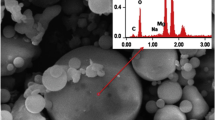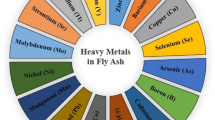Abstract.
Coal combustion produces carbon dioxides, SOx, NOx and a variety of byproducts, including fly-ash, flue gas and scrubber sludge. Fly-ash consists of minute glass-like particles and its deposition on leaves inhibits the normal transpiration and photosynthesis of plants. Fly-ash also affects the physicochemical characteristics of soil because it is generally very basic, rich in various essential and non-essential elements, but poor in both nitrogen and available phosphorus. The massive fly-ash materials have been a potential resource for the agricultural activities as well as the other industrial purposes. Practical value of fly-ash in agriculture as an 'effective and safe' fertiliser or soil amendment can be established after repeated field experiments. Here remains to be disclosed the biological processes and interactions due to 'lack and excess' of the fly-ash exposures along with abiotic and biotic factors. These may involve the symbiotic fixation of nitrogen and the biological extraction of metals following immobilisation of toxic heavy metal ions, as well as other neutralisation and equilibration processes during weathering. Nitrogen-fixing plants with an apparent heavy metal-tolerance can be helpful as the early colonisers of fly-ash dumps and nearby areas.
Similar content being viewed by others
Author information
Authors and Affiliations
Additional information
Electronic Publication
Rights and permissions
About this article
Cite this article
Gupta, D.K., Rai, U.N., Tripathi, R.D. et al. Impacts of fly-ash on soil and plant responses. J Plant Res 115, 401–409 (2002). https://doi.org/10.1007/s10265-002-0057-3
Received:
Accepted:
Issue Date:
DOI: https://doi.org/10.1007/s10265-002-0057-3




